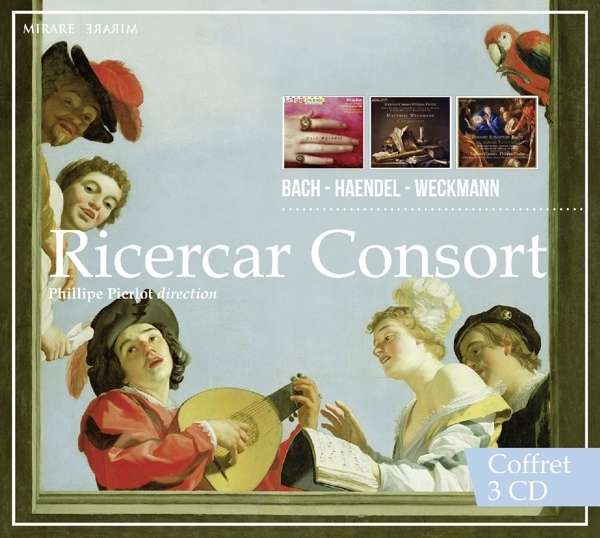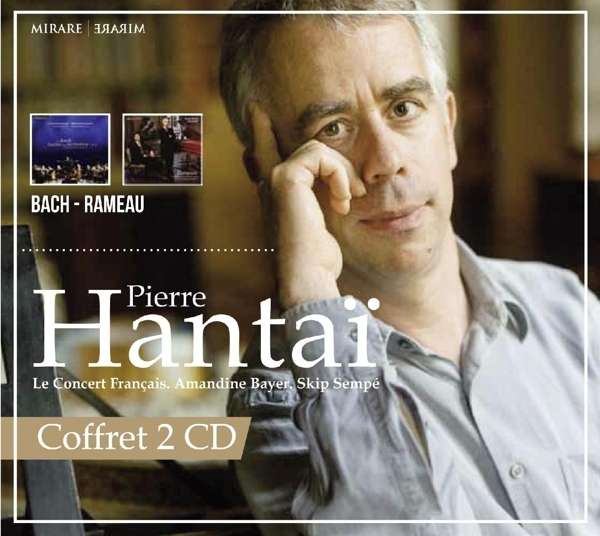Hannah Morrison, Esther Brazil, Meg Bragle, Kate Symonds-Joy, Peter Davoren, Nick Pritchard, Alex Ashworth, David Shipley SSAATTBB, Monteverdi Choir, English Baroque Soloists, John Eliot Gardiner
105:56 (2 CDs)
Soli Deo Gloria SDG722
[dropcap]I[/dropcap]t is thirty years since John Eliot Gardiner recorded the B minor Mass and this version, as his notes – largely material drawn from Chapter 13 of his Music in the Castle of Heaven – reveal, is a statement of where he and his players have got to after their immersion in the Cantatas over the millennium year and a host of performances since. The most obvious departure from his previous Bach is that the ‘solos’ are sung by members of the choir, so for example there is a lovely and intelligent balance between the Soprano and Alto (rather than a second soprano as asked for) in the Christe, clearly the fruit of having sung together frequently: this is a huge plus over the recordings which have hired-in soloists for these parts. The same is true of the Et in unum of the Symbolum too, where we first hear the admirable Meg Bragle. But Gardiner’s new version is still essentially a work sung by a full chorus, the polished and excellently prepared Monteverdi Choir. The attention to phrasing, accentuation and dynamic marks – applied in a somewhat romantic way – are wonderful, yet I couldn’t help wondering whether the effect Gardiner is after isn’t still in the grand heroic mode, rather than being informed by the latest scholarly discoveries and a fundamental desire to discover the layered nature of the music. He uses the 2010 Bärenreiter edition, but there is no discussion in the booklet of any of the critical issues the autograph score and its corrections raised in the light of the variations discovered in the autograph parts. There is no information either about instruments or temperament, so we are left guessing as to what informs and drives Gardiner’s decisions.
For example, all the music, except for the single-voice arias and duets, is sung by the full choir – which is 13.9.7.6, partnered by the band which is 6.6.4.3.2 strings who seem to play tutti thoughout as far as I can judge. This tutti makes a splendid sound, but dynamic contrasts on the whole are made by singers and players increasing or diminishing their volume rather than by adding to or diminishing the number of singers or violins. Perhaps this ‘modern’ view of the orchestra is where Bach had arrived at the end of his life, having witnessed – and helped in – its evolution from those independent cori of brass, wind, strings, voices and continuo that he inherited from the scoring of previous generations and which is still apparent in cantatas originating in Weimar, like Der Himmel lacht! (BWV31), into a more homogenous whole. Finding the right texture and tessitura seems to inform the choice of which voice sings which solo rather than a principled decision to present the Missa with essentially a vocal quintet, and adding the numbers of players and singers as required by the volume and texture of the music and how it is scored. Indeed Gardiner, when ruminating on the structure of the mass in chapter 13 of his Music in the Castle of Heaven contrasts (p.491) ‘public (choral) with private (solo) utterance’. In his mind and on this recording there is no difference in the choral sound between the ‘intonation’ to the Symbolum, with its fugato on the Gregorian chant with a pair of violins and the full sound of the Patrem omnipotentem that follows: both are delivered at full pelt as ‘public’ choral utterance. But surely a contrast should be made here that reflects the liturgical division between the celebrant’s intonation and the assembly’s response? Public and private are not categories that I recognize in scoring the vocal parts of a work like the B minor mass, even if you could make a case for treating the arias in the Passions in this way.
On the plus side, there are quintessential Gardiner moments – the terrific accelerando in the last four bars of the ritornello of the Quoniam leading to the perilously fast but perfectly controlled Cum Sancto Spirito, which remains clear and in tune and is a tribute to choir’s and orchestra’s technical accomplishment in delivering just what Gardiner sets them. Not everyone will like the highly mannered phrasing in the first Kyrie, or the sharp accents and dynamic changes in the second Kyrie – and it feels a bit laboured, as though there are four beats in each bar rather than the two implied by the alla breve ¢ time signature. But in the Missa as a whole, the dovetailing of the movements is beautifully managed, and the immediate start of the Qui sedes as the Qui tollis ends works for me. I admired the controlled and pent-up emotional control of the Incarnatus and the choppy Crucifixus with the darker colour accentuated by using only the 2nd sopranos, but the crescendo of the band in bar 36 before the accented entries in bars 37ff seems wildly anachronistic to me. I like the audible intake of breath before Et resurrexit, and if you think that the bass line et iterum venturus (bar 74ff) should be sung tutti, you won’t hear a neater and more unanimous choral sound. We have a lighter, more lyrical bass (Alex Ashworth) to sing the Et in Spiritum sanctum, though the bass line of the chorus as a whole is coloured more by the dark voice of David Shipley who does the Quoniam – it’s a darker, throatier sound than emerges from any other part. As the Confiteor winds down, we step away from the old-style Gregorian cantus firmus into the almost Beethoven-like chromaticisms of the Adagio of the Et expecto before subito vivace on the first beat of bar 147. As you would guess, this is managed dramatically in the classical manner. Here is where we see Gardiner at his best: putting into practice the theories he has come to adopt.
The Sanctus is pretty steady, and the Osanna continues in exactly the same tempo as the Pleni sunt coeli. The Agnus allows us to hear Meg Bragle again on her own, and the final Dona nobis can’t resist a pp start with a gradual crescendo in all the parts.
The playing is very fine, but the decision to avoid extreme temperaments and use tuning vents in the trumpets gives the band a modern feel: it’s safer, even if less exciting. You don’t get those ringing chords re-creating the fundamental so clearly without completely natural harmonics, as Suzuki seems belatedly to have discovered. The trumpets manage well enough – though there are hurried semiquavers in bar 67 of the Gloria, and an unhelpful accent (of relief?) on the final note of the run on the first beat of bar 47 of the Patrem omnipotentem, when it should just tail away. These are really nit-picking comments, but when so much else is so good, it is a pity for tiny details like this to let the side down.
So should you buy this version? I probably wouldn’t, though its technical competence is superb according to its own lights, and I loved hearing the members of the choir sing the solo and duet numbers. The Monteverdi Choir are hugely accomplished, and sing quite wonderfully. But you should certainly listen to it. It’s just that I’m not sure I like even my big-scale Bach like that any more. I prefer the excitement of the clean textures of a group like Václav Luks’ Collegium Vocale 1704, that I reviewed in the December 2013 EMR. But punters will love it – and it’s certainly a winner in the great English choral tradition of which Gardiner and his forces are and have been standard-bearers for so long.
David Stancliffe
[iframe style=”width:120px;height:240px;” marginwidth=”0″ marginheight=”0″ scrolling=”no” frameborder=”0″ src=”//ws-eu.amazon-adsystem.com/widgets/q?ServiceVersion=20070822&OneJS=1&Operation=GetAdHtml&MarketPlace=GB&source=ss&ref=ss_til&ad_type=product_link&tracking_id=infocentral-21&marketplace=amazon®ion=GB&placement=B0159IR5WS&asins=B0159IR5WS&linkId=&show_border=true&link_opens_in_new_window=true”]
[iframe src=”http://www.jpc-partner.de/link.php?partner=ngr&artnum=8394893&bg=ffffff&tc=000000&lc=e5671d&s=120&t=1&i=1&b=1″ width=”120″ height=”214″ scrolling=”no” frameborder=”0″]
[iframe style=”width:120px;height:240px;” marginwidth=”0″ marginheight=”0″ scrolling=”no” frameborder=”0″ src=”//ws-na.amazon-adsystem.com/widgets/q?ServiceVersion=20070822&OneJS=1&Operation=GetAdHtml&MarketPlace=US&source=ss&ref=ss_til&ad_type=product_link&tracking_id=earlymusicrev-20&marketplace=amazon®ion=US&placement=B0159IR5WS&asins=B0159IR5WS&linkId=HNTLCAG4KFYCMK4P&show_border=true&link_opens_in_new_window=true”]





